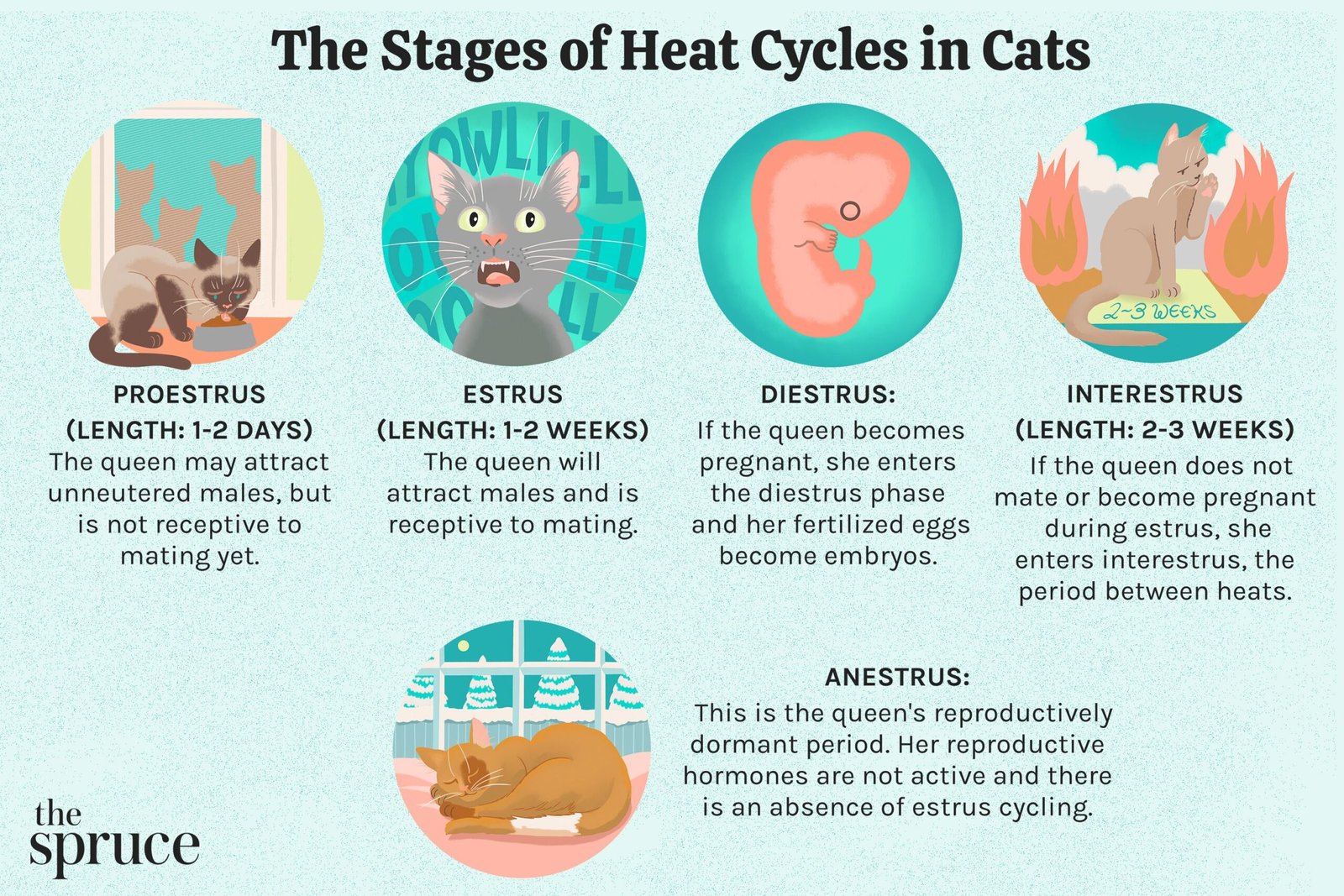Have you ever wondered how often cats go into heat? Cats are known to be seasonally polyestrous, meaning they have multiple heat cycles throughout the year. Most cats will go into heat every 2 to 3 weeks during the breeding season, which typically occurs during the spring and summer months. During this time, female cats will exhibit behavioral changes and may vocalize more frequently. It’s important to understand your cat’s heat cycle to ensure proper care and prevent unwanted pregnancies. How Often Do Cats Go Into Heat?
Understanding the Reproductive Cycle of Cats
As a cat owner, it’s important to understand the reproductive cycle of your feline friend. One of the key aspects of this cycle is when a female cat goes into heat. This can be a confusing and sometimes frustrating time for both the cat and the owner. In this article, we will explore the frequency at which cats go into heat, what you can expect during this time, and how to best care for your cat during this period.
What is Estrus?
Estrus, more commonly known as being in heat, is the period of time in which female cats are receptive to mating. This is a natural part of their reproductive cycle and can occur as early as 4-6 months of age, although it is more common to see it start around 6-9 months. During this time, your cat will display various behaviors and physical changes that indicate she is in heat.
Signs That Your Cat is in Heat
When your cat is in heat, you may notice some changes in her behavior and physical appearance. Some common signs that your cat is in heat include:
- Increased vocalization: Your cat may meow more frequently and loudly than usual.
- Rolling or rubbing: Your cat may roll around on the floor or furniture more often and rub against objects.
- Restlessness: Your cat may be more restless and agitated than usual.
- Increased affection: Your cat may seek more attention and affection from you or other pets in the household.
- Change in appetite: Your cat may eat more or less than usual during this time.
How Often Do Cats Go Into Heat?
The frequency at which cats go into heat can vary depending on several factors, including breed, age, and environmental conditions. In general, female cats will go into heat every 2-3 weeks during the breeding season, which typically lasts from spring to fall. However, some cats may go into heat more frequently, while others may have longer intervals between heat cycles.
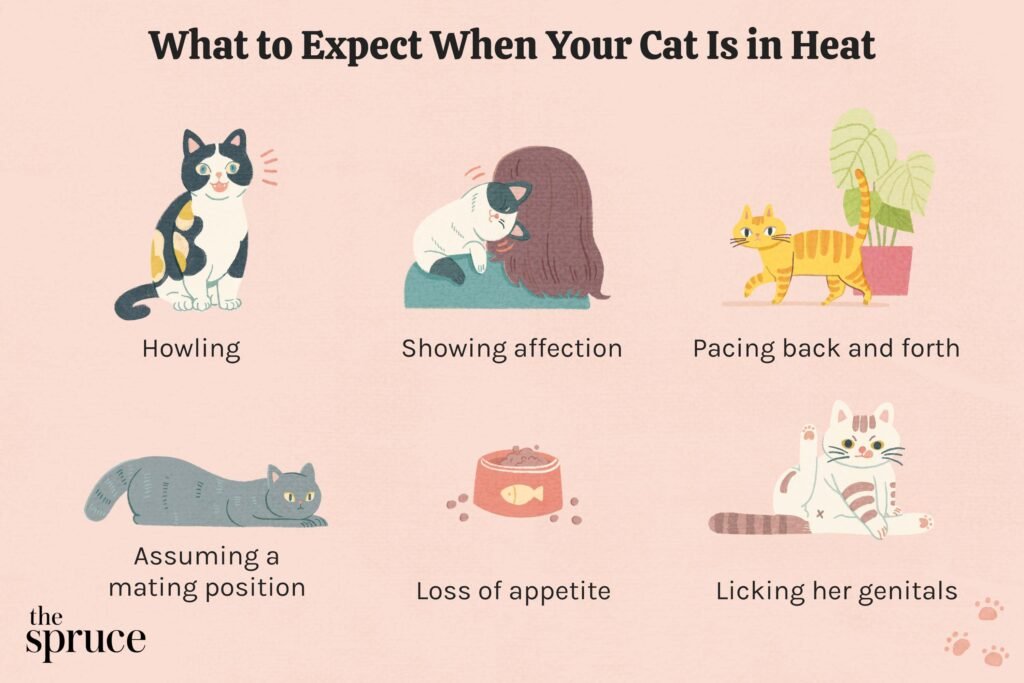
Factors That Influence the Frequency of Heat Cycles
Several factors can influence how often a cat goes into heat. Understanding these factors can help you better predict when your cat will be in heat and prepare accordingly.
Breed
Certain cat breeds are known to go into heat more frequently than others. For example, Siamese and Burmese cats are known to have shorter heat cycles, sometimes as short as 1-2 weeks. On the other hand, breeds like Persians and Maine Coons may have longer intervals between heat cycles.
Age
Younger cats typically go into heat more frequently than older cats. Kittens as young as 4-6 months old can go into heat for the first time, and they may have more frequent heat cycles during their first year of life. As cats age, the frequency of heat cycles may decrease.
External Factors
External factors, such as the presence of male cats in the area, can also influence how often a female cat goes into heat. If your cat is exposed to male cats or if there are other cats in the neighborhood that are in heat, this can trigger more frequent heat cycles in your cat.
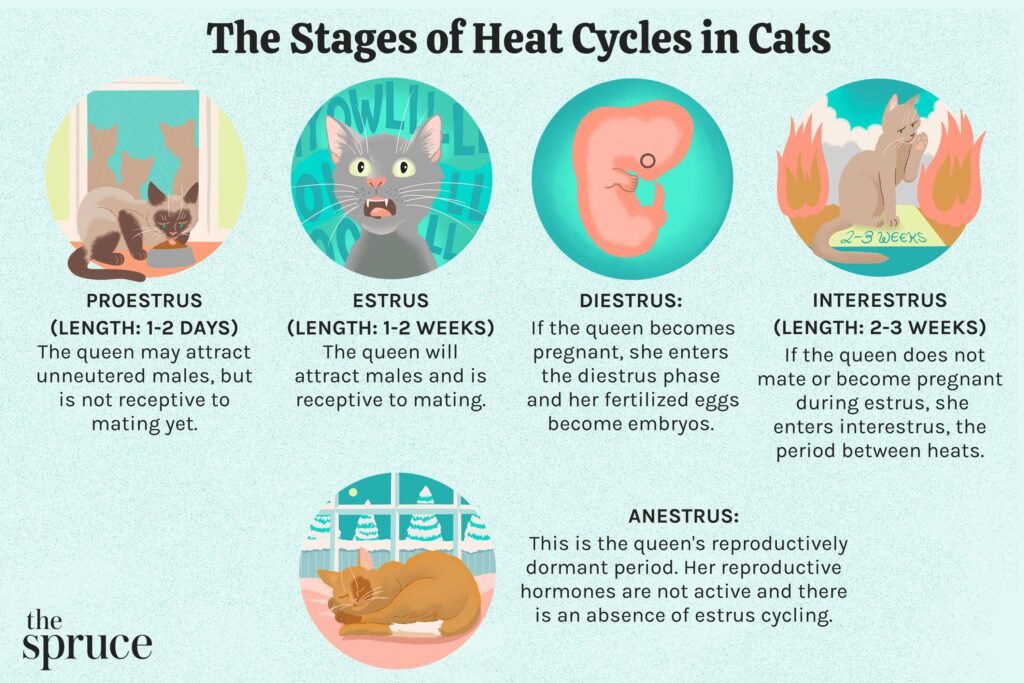
What to Expect During Your Cat’s Heat Cycle
During your cat’s heat cycle, you may notice some changes in her behavior and physical appearance. Understanding what to expect can help you better care for your cat during this time.
Behavioral Changes
Your cat’s behavior may change significantly when she is in heat. Some common behavioral changes you may notice include:
- Increased vocalization: Your cat may meow loudly and frequently, especially at night.
- Restlessness: Your cat may pace around the house and seem more agitated than usual.
- Rolling and rubbing: Your cat may roll around on the floor and rub against furniture and objects.
- Increased affection: Your cat may seek more attention and affection from you or other pets in the household.
- Escape attempts: Your cat may try to escape from the house in search of a mate.
Physical Changes
In addition to behavioral changes, you may also notice some physical changes in your cat when she is in heat. Some common physical changes include:
- Swollen vulva: Your cat’s vulva may appear swollen and more prominent than usual.
- Excessive grooming: Your cat may groom herself more often during this time.
- Increased urination: Your cat may urinate more frequently and may have accidents outside of the litter box.
- Tail quivering: Your cat’s tail may quiver or twitch when she is in heat.
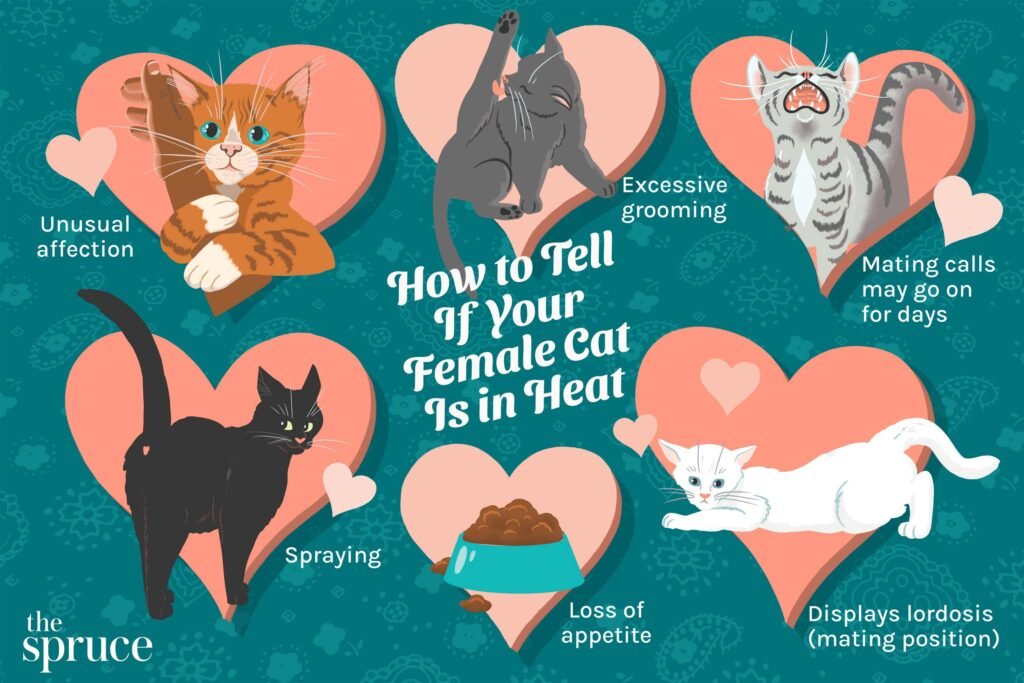
How to Care for Your Cat During Heat
Caring for your cat during heat is essential to ensure her well-being and prevent unwanted behaviors. Here are some tips on how to care for your cat during this time:
Provide a Safe and Comfortable Environment
Create a safe and comfortable environment for your cat to help her feel secure during heat. Make sure she has access to her favorite resting spots, toys, and hiding places.
Minimize Stress
Try to minimize stress in your cat’s environment during heat. Avoid sudden changes or disruptions in her routine and provide plenty of quiet, calm spaces for her to relax.
Keep her Indoors
It’s essential to keep your cat indoors during heat to prevent unwanted pregnancy and exposure to potential dangers outdoors. Make sure she has access to plenty of mental and physical stimulation indoors.
Consider Spaying
If you do not plan to breed your cat, consider spaying her to prevent further heat cycles and potential health risks associated with being in heat. Spaying also helps reduce the overpopulation of cats.
Consult with Your Veterinarian
If you have any concerns about your cat’s health or behavior during heat, consult with your veterinarian. They can provide guidance on how to best care for your cat and may recommend additional measures to help manage her heat cycles.
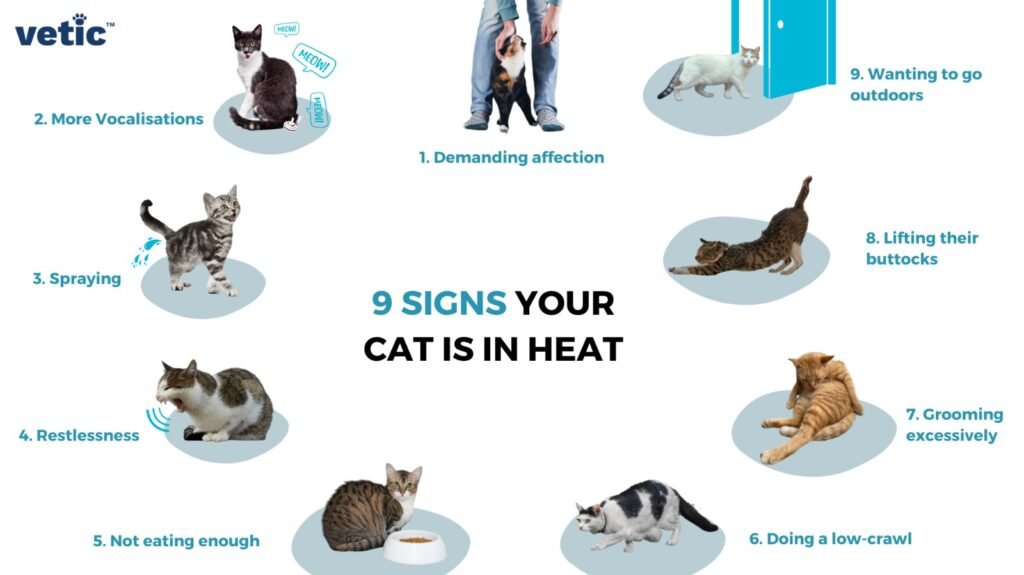
Conclusion
In conclusion, understanding how often cats go into heat is essential for every cat owner. By knowing the signs of heat, the factors that can influence the frequency of heat cycles, and how to care for your cat during this time, you can provide the best possible care for your feline friend. Remember to consult with your veterinarian if you have any concerns or questions about your cat’s reproductive cycle.

